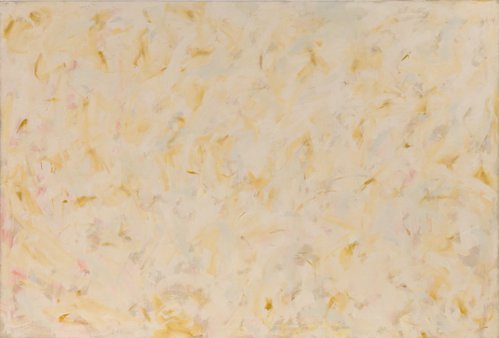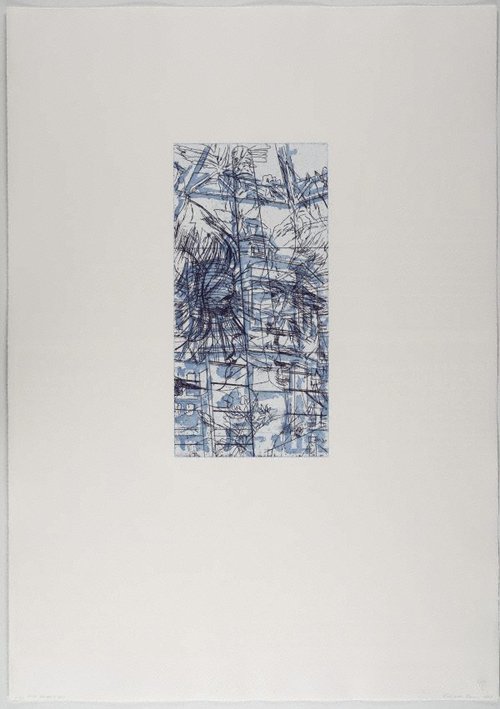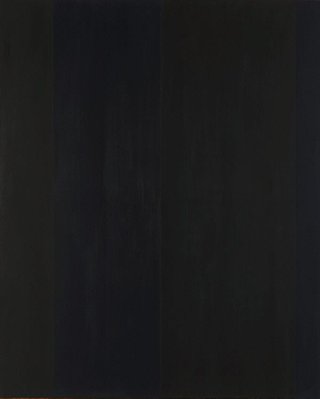
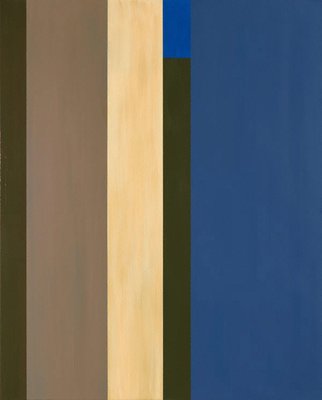
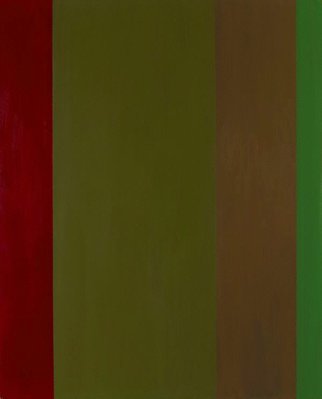
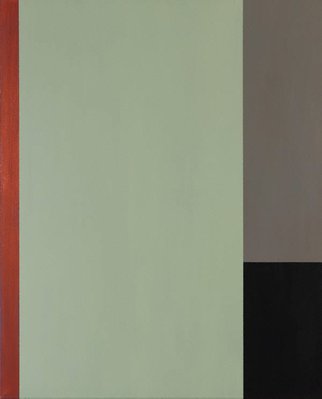
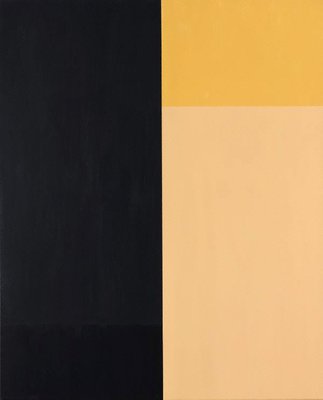
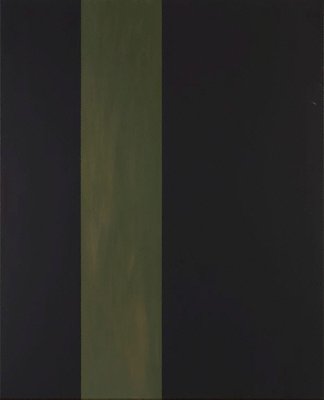
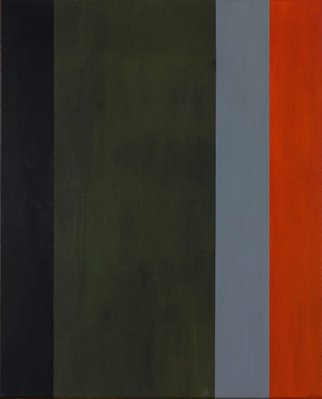
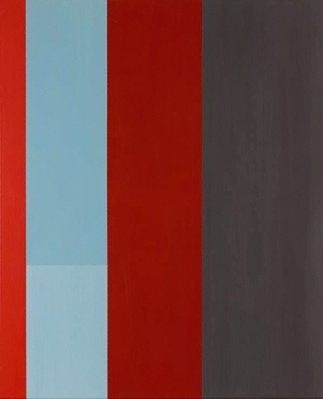
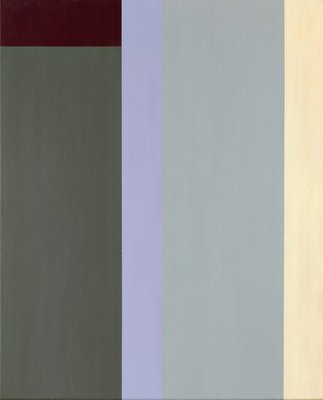
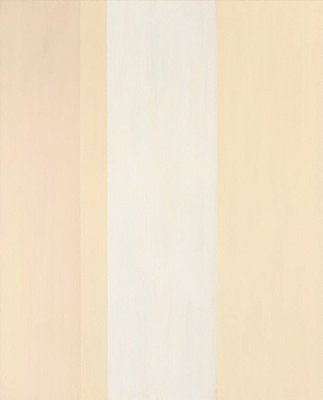
-
Details
- Date
- 2002
- Media category
- Painting
- Materials used
- synthetic polymer paint on canvas, 10 panels
- Dimensions
- 10 panels: each 170.0 x 137.5 cm
- Credit
- Gift of the artist 2011. Donated through the Australian Government's Cultural Gifts Program.
- Location
- Not on display
- Accession number
- 201.2011.a-j
- Copyright
- © Richard Dunn
- Artist information
-
Richard Dunn
Works in the collection
- Share
-
-
About
Philosopher Ludwig Wittgenstein wrote on colour in Volume 1 (Band I), 'Philosophische Bermerkungen' (published 1926):
"It is obvious there is no relation of 'existence' between colour and the place in which it exists.
There is no intermediary element between colour and space.
Colour and space saturate each other.
And the way they permeate each other constitutes the visual field."Wittgenstein was one of the most important philosophers of the 20th century and his fragmentary writings on colour and his actual application of colour in the house he designed for his sister in Vienna are the source from which Dunn has worked through this series of abstract colour paintings.
Dunn has written of these works:
In a complex world there are circumstances, values and experiences that traditional and verbal language cannot adequately communicate.
At the beginning of the last century a comparably contingent and complex world was reflected on by Viennese philosopher Ludwig Wittgenstein in his reflections on language. To go beyond the boundaries of language, then and now, allows a vital space - a place - for more creative contemporary art.
This suite of paintings is generated by the specific colours used by Wittgenstein as the architect of his sister's house in Vienna and in his discussion of colour in his writings. In this house, Wittgenstein challenged modernist idealism, accommodating cultural diversity and eastern and western ideas and objects. Misunderstood over time, this house has been a longstanding source of speculative fascination to me.
The colours used defy easy description. They are complex and difficult to name, transcending the bounds of simple colours. They require visual response and contemplation. The locality of this meditation on colour coincidentally reflects the colours of the more close Australian landscape and refers to the Australian locality in a particular way.
Why colour? It alters ones sense of space, and colours interact by their proximity under changing light. The colour relationships within this suite of works are spatially evocative distillations of complex structures, although non-representational. They are attempts to create, as much as is possible in abstract painting, a sense of particular space by the divisions and colour relations. The paintings invite entry to a harmonious space like that of the Viennese building that generated them or the vastness of central Australia.
Richard Dunn, 'Wittgenstein's colour'
http://www.richard-dunn.net/index.php/work/view/1/14
accessed 1 June 2011 -
Exhibition history
Shown in 1 exhibition
Richard Dunn: Wittgenstein's colour, Sherman Galleries, Paddington, 11 Apr 2002–04 May 2002
-
Bibliography
Referenced in 3 publications
-
Anne Marie Freybourg, Richard Dunn: Mani-fold, paintings + photography, 'The radiance of pictures', pg. 23-27, Berlin, 2005, 23-27 (colour illus.).
-
Pamela Hansford, Eyeline [no 52], 'From Vienna to Chemnitz: eclecticism and interpretation in the work of Richard Dunn', pg. 23-24, Brisbane, 2003, 23-24 (colour illus.).
-
Sherman Galleries, Richard Dunn: Wittgenstein's colour, Sydney, 2002, (colour illus.). unpaginated
-

